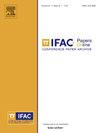锂离子电池工业缺陷检测的混合堆叠-贝叶斯模型
Q3 Engineering
引用次数: 0
摘要
由于锂离子电池的广泛使用,缺陷检测至关重要。确保它们的安全和性能至关重要,因为缺陷可能导致严重问题,如过热和爆炸。早期缺陷检测提高了电池的可靠性,延长了寿命,并通过减少保修索赔和召回来降低制造成本。本文提出了一种基于机器学习的框架,用于检测霓虹灯用锂离子电池的缺陷。我们的方法结合了各种集成分类算法作为最终堆叠元学习器的基估计器。首先利用遗传算法进行特征选择,然后利用贝叶斯超参数优化模型。采用多层感知机(MLP)和支持向量机(SVM)作为元学习器的叠加方法,提高霓虹灯面板用锂离子电池缺陷检测的分类精度。我们的混合堆叠-贝叶斯(HSB)方法证明了这些模型在准确识别缺陷电池方面的有效性,通过减少浪费和优化资源利用,有助于提高制造质量控制和可持续性。在真实锂离子电池数据上实施我们的模型,展示了它在行业实际应用中的潜力。本文章由计算机程序翻译,如有差异,请以英文原文为准。
A Hybrid Stacking-Bayesian Model for Defect Detection in the Lithium-Ion Battery Industry
A defect Lithium-ion battery defect detection is critical due to the widespread use of these batteries. Ensuring their safety and performance is essential, as defects can lead to serious issues, such as overheating and explosions. Early defect detection enhances battery reliability, extends lifespan, and reduces manufacturing costs by mitigating warranty claims and recalls. This paper presents a machine learning-based framework for detecting defects in lithium-ion batteries used in neon signs. Our approach combines various ensemble classification algorithms as base estimators for final stacking meta-learners. A Genetic Algorithm (GA) is used for feature selection, followed by model optimization using Bayesian hyperparameter tuning. Stacking methods with Multi-Layer Perceptron (MLP) and Support Vector Machine (SVM) as meta-learners are employed to enhance classification accuracy for defect detection in lithium-ion batteries used in neon panels. Our Hybrid Stacking-Bayesian (HSB) approach demonstrates the effectiveness of these models in accurately identifying defective batteries, contributing to improved manufacturing quality control and sustainability by minimizing waste and optimizing resource utilization. Implementing our model on real lithium-ion battery data showcases its potential for practical applications in the industry.
求助全文
通过发布文献求助,成功后即可免费获取论文全文。
去求助
来源期刊

IFAC-PapersOnLine
Engineering-Control and Systems Engineering
CiteScore
1.70
自引率
0.00%
发文量
1122
期刊介绍:
All papers from IFAC meetings are published, in partnership with Elsevier, the IFAC Publisher, in theIFAC-PapersOnLine proceedings series hosted at the ScienceDirect web service. This series includes papers previously published in the IFAC website.The main features of the IFAC-PapersOnLine series are: -Online archive including papers from IFAC Symposia, Congresses, Conferences, and most Workshops. -All papers accepted at the meeting are published in PDF format - searchable and citable. -All papers published on the web site can be cited using the IFAC PapersOnLine ISSN and the individual paper DOI (Digital Object Identifier). The site is Open Access in nature - no charge is made to individuals for reading or downloading. Copyright of all papers belongs to IFAC and must be referenced if derivative journal papers are produced from the conference papers. All papers published in IFAC-PapersOnLine have undergone a peer review selection process according to the IFAC rules.
 求助内容:
求助内容: 应助结果提醒方式:
应助结果提醒方式:


